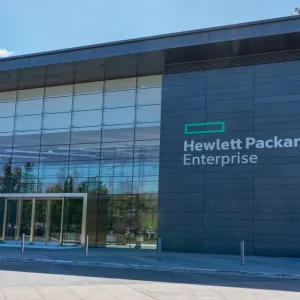I’m sure you’ve heard this before but Tibco playing in the social software space doesn’t seem a natural fit.
Matt Quinn: We actually introduced the concept about Tibbr about three years ago when we did the launch of our cloud services. Our CEO Vivek Ranadive has talked about a "subject-based repository" where people go and get information. And before that we had a product called MarketSheet. Traders would have it in front of them and within it they could customise the information sources they were using. That was predominately focused on market data but non financial information was also used – chat boxes, baseball scores and so on.
We’ve recognised the way the millennials look at email is the same way we thought about handing around paper memos when we joined the workplace. We used to have physical inboxes with your name on. Going into a company now that didn’t have a social media strategy for internal adoption, would make me pause.
Raj Verma: Tibbr was a very logical next step to augment our product portfolio. It wasn’t something where we jumped on the social software bandwagon.
So what is driving this change?
MQ: Companies have recognised the need to offer this to not only their customers but also internally. I think there is a growing acceptance that a lot of the collaboration software products were just as siloed as the things they replaced.
Portals got replaced by collaboration software that was largely document management systems (DMS). The successful ones were very departmental. Very few enterprise-wide content management systems truly delivered that collaboration.
Services like Facebook and Twitter have essentially trained a generation of people how to use software. When you launched a product you hired sales guys to sell it and you did a training programme. You don’t need to do that anymore. Why would you want a training programme for a tool that has been designed to be as easy as use as Facebook.
RV: When was the last time you took training for Facebook? We figured that out early. Being based in Silicon Valley we seem to find trends a lot earlier than you’d find elsewhere. We were finding that the Generation Z, the ones who graduated from High School two years ago, were the first generation that actually spent their entire educational life on the internet.
We established that the generation was only going to grow and that they collaborate via text message or social forums rather than email. How would an enterprise organise itself for this? One is to have separate silos of collaboration. For example, Chatter. It is a collaboration tool for salesforce.com data. If I want to collaborate around my support data I have to have another instance of collaboration software.
One of our customers described Chatter like having to buy a TV for every channel you wanted to watch; Tibbr is like having one TV and you can switch between whichever channels you want.
We thought we’d be a force in this area because the social collaboration is probably the easy part. But the differentiator for us is the billion-dollar back-end Tibbr sits on, our integration, BPM, analytics, messaging platforms and so on.
But the way Tibbr works – one product sitting across all a company’s data – could result in information overload, couldn’t it?
MQ: We have concepts of information hierarchy as well as public, private and protected subjects. So what you see and who you follow is totally up to you.
As companies grow the challenge is that you lose people who have the intellectual property. In a small company you know things about your colleagues; it’s not the same in a company of 25,000 people. But here you’re dictating how the information is delivered and you pick and choose what you access. Through that you can find relevant information and make connections that existed only when the company was 50 people. That’s the power of social tools. It’s like creating lots of little companies within one very big one.
If so much of the inspiration has come from Facebook and Twitter why shouldn’t companies just be using those tools?
MQ: The obvious one is that you don’t own the information and with sensitive information being shared, a public place is not the place to be.
Also, companies want more. Facebook is the same for all its users; companies have different needs, goals and systems they need to integrate to. They must be adaptable and customisable and they must adopt all the usual security processes that these environments require.
RV: There are certain customers of ours that because of regulation and compliance they cannot put their data on the cloud, so they use Tibbr on-premise.
Fundamentally, if you look at the design of Facebook and everything it does, it’s targeted at keeping people on the site for as long as possible. That is completely different to how you require social media in the enterprise. I don’t want people to be on Tibbr all day long, I want them to get the information and get on with it.
You can also hear Quinn and Verma’s thoughts on Microsoft’s $1.2bn acquisition of rival enterprise social network Yammer by clicking here.






